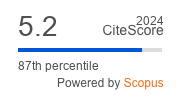Article | Open Access
Healthcare Reform Repeal Efforts in the United States in 2017: An Inquiry into Public Advocacy Efforts by Key Interest Groups
| Views: | 4180 | | | Downloads: | 2845 |
Abstract: The Affordable Care Act (ACA) was subjected to repeated repeal and replace efforts in the United States Congress in 2017. Attempts to repeal and replace the law failed, but penalties for not complying with its mandate that individuals purchase health insurance were removed in tax legislation passed late in the year and administrative actions taken by President Trump yielded additional concerns about the stability of the law’s reform approach and the expanded health insurance access that it created. This article explores public advocacy efforts by key interest groups from three major policy sectors—health providers, the insurance industry, and the business community—that had served as an “axis of opposition” to past American healthcare reform efforts. It identifies resource and incentive policy feedback effects that appear likely to influence these groups due to design features of the ACA and assesses whether patterns of advocacy efforts in 2017 are consistent with what might be expected if these design features had their predicted effects. Our assessment reveals patterns of interest group advocacy that are consistent with what might be expected to arise from resource and incentive based policy feedback effects, and interest group political dynamics that differ from what was in place prior to passage of the ACA. It also reveals advocacy patterns that are not well explained by resource and incentive based policy feedback effects, and—in so doing—yields insights that are relevant to the design of policy reforms and future research.
Keywords: Affordable Care Act; Obamacare; policy feedback; policy design; policy reform; resource-incentives; resource effects; sustainability of policy reforms
Supplementary Files:
Published:
© John Hoornbeek, Bethany Lanese, Mutlaq Albugmi, Joshua Filla. This is an open access article distributed under the terms of the Creative Commons Attribution 4.0 license (http://creativecommons.org/licenses/by/4.0), which permits any use, distribution, and reproduction of the work without further permission provided the original author(s) and source are credited.


